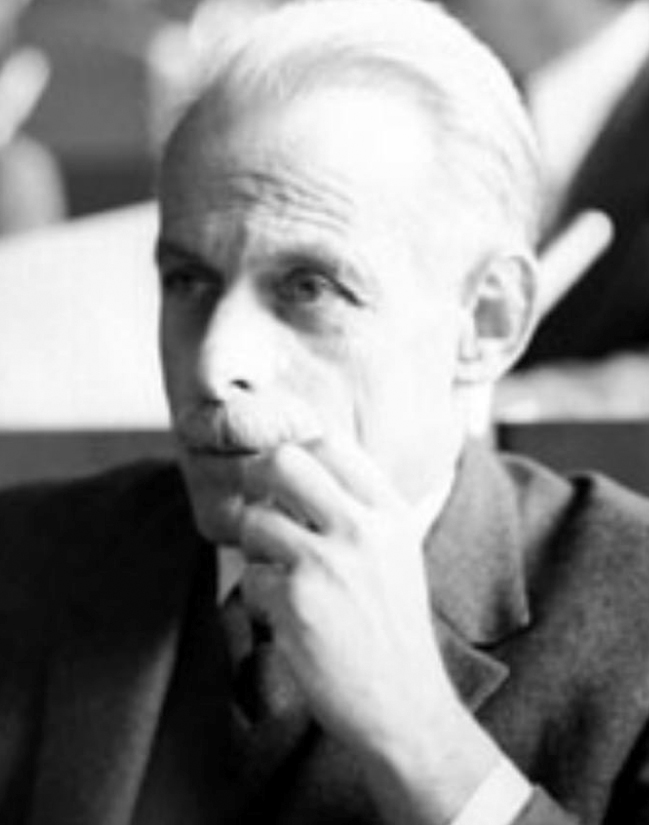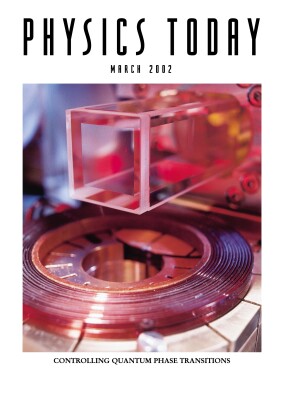Paul Falk-Vairant
DOI: 10.1063/1.1472401
Paul Falk-Vairant, an important figure in the coming of age of particle physics in France and a director of research at CERN in the 1970s, died on 9 March 2001. He had become ill following the death of his wife, which affected him very deeply.
Falk-Vairant was born in Geneva, Switzerland, on 21 April 1921. He attended the Polytechnic Institute of Zurich, where he received his diplom in 1947. He then joined the Radium Institute in Paris. In 1953, he received his doctorate in physics from the University of Paris, under the supervision of Irène Joliot-Curie. His thesis was on gamma radiation from protactinium-231. That same year, he obtained French citizenship.
In the early 1950s, he joined the Atomic Energy Research Commission (CEA) at Saclay; the CEA was then preparing to use the nearly completed Saturne synchrotron for studies in particle physics. By the early 1960s, the CERN proton synchrotron (PS) offered more exciting opportunities.
During the 1960s at Saclay, Falk-Vairant directed the first experiment on the CERN PS to be run by a fully external research group, the Orsay-Pisa-Saclay collaboration. The group studied pion-nucleon charge exchange, eventually on a polarized target. The work turned out to be a showcase for the application of Regge pole theory to high-energy scattering.
In 1967, Falk-Vairant beecame a full professor of physics at the University of Paris VI. He created a research group that eventually developed into the Laboratory of Nuclear and High Energy Physics in Paris.
He chaired, until 1973, the study group that paved the way for research on the Super Proton Synchrotron (SPS) at CERN, which was set up soon after the approval of the machine in 1971. As a result of his leadership, Falk-Vairant became director of research at CERN in 1973, a post he held for five years while on leave from the University of Paris. That was a very important time at CERN: Researchers studied neutrino scattering, discovered the neutral current interaction, and made good use of the intersecting storage rings and the SPS—which was boldly and quickly transformed into a proton-antiproton collider. In addition, researchers developed an intense antiproton source based on a recent stochastic cooling technique. These new developments eventually led to the 1983 discovery of the W and Z bosons. The long preparatory work leading to the Large Electron-Positron Collider (LEP) proposal was also undertaken from the late 1970s into the earlv 1980s.
During all this activity, Falk-Vairant remained approachable and open to ideas, while still maintaining a firm grip on the helm. He had a well-balanced vision of the work and had great instincts about what was possible. Some of us still remember his “Salut, les copains” (“Hello, buddies”) resonating at the beginning of potentially delicate meetings. His rigor, efficiency, and honesty were well recognized.
Falk-Vairant left CERN in 1981 to join the French National Institute for Particle and Nuclear Physics (IN2P3) as deputy director for particle physics, a position he held until his retirement in 1987. During his time at IN2P3, French groups made significant contributions to the proton-antiproton collider work at CERN in the UA1 and UA2 experiments, the preparation of the major French experimental effort at the LEP, and the beginning of underground experiments, particularly the Fréjus tunnel. Falk-Vairant had the foresight to realize that a lack of computer resources could hinder progress in the use of the LEP. To avoid a bottleneck, he directed the construction of a computing center in Lyon for the different research groups of the IN2P3. Through his leadership, he positively influenced the necessary transition of particle physics research to the very large international groups that constructed and used large detectors at CERN.
Falk-Vairant enjoyed yachting and modern art. He was a man of impeccable character who often came to his decisions during solitary walks in a small Parisian park close to the IN2P3 head office, after collecting opinions directly from those people involved. He then presented his decisions in a passionate and almost theatrical manner. His wisdom and personal style will long be remembered. A modest man, Falk-Vairant was very happy to have been in key positions during a glorious era in particle physics.

Paul Falk-Vairant

More about the Authors
Maurice Jacob. CERN, Geneva, Switzerland .
